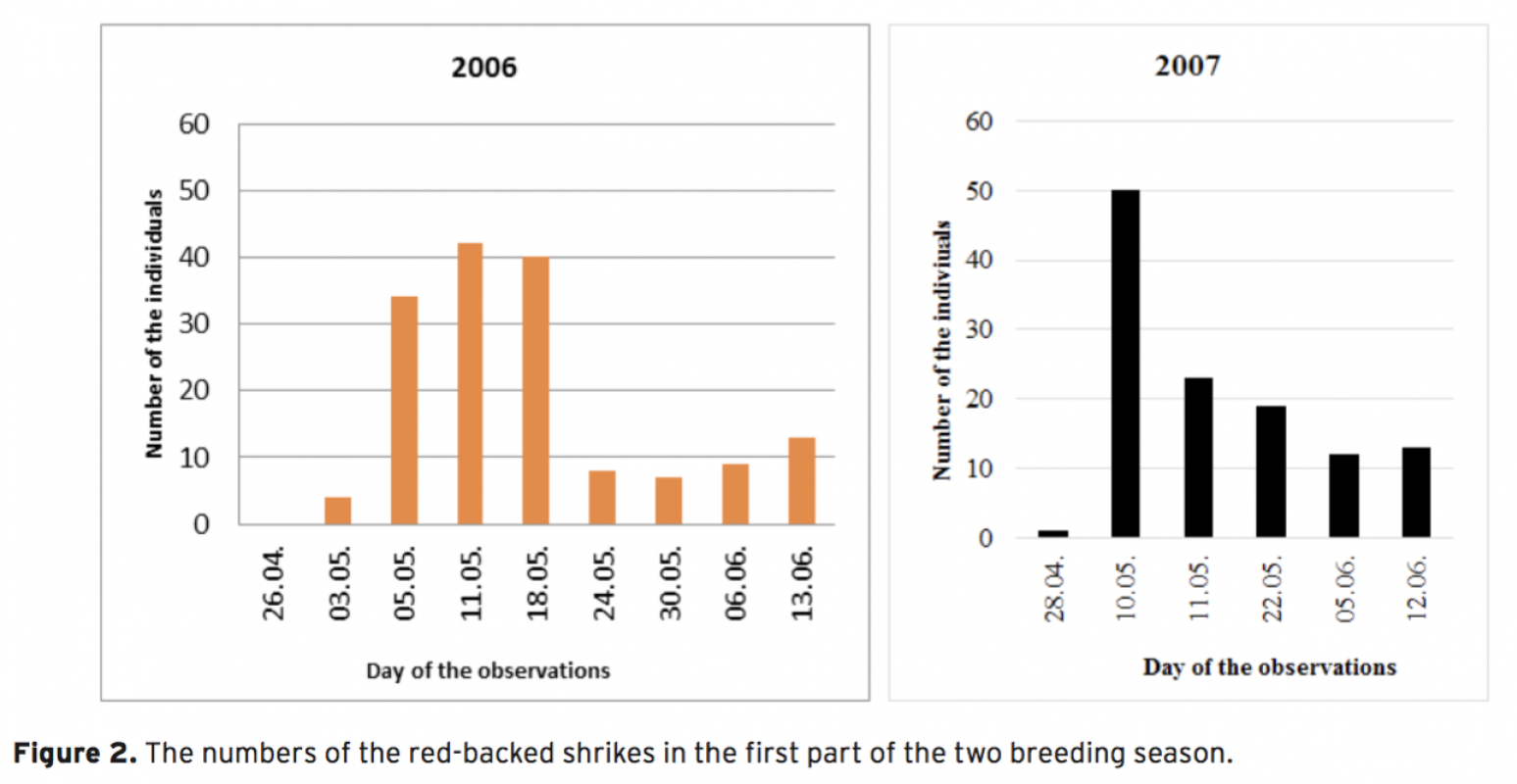We investigated the breeding performance and nest site properties of the red-backed shrikes in a small population in Nallihan Bird Sanctuary in Turkey. We carried out the field studies during the 2006 and 2007 breeding seasons. We monitored 12 nests of 7 breeding pairs in the 2007 breeding season. Most of the territories were near the Aladag Stream-Riparian Habitat. The distance between the nests were 110 ± 20 m. The red-backed shrikes built their nests in the thorny bushes at the average height of 80 ± 32.5 cm above the ground. Only one pair could raise fledglings within the monitored pairs. Four Nests were predated during the incubation and four nests were predated during nestling stage in the 2007 breeding season. Yet, the previous year we had detected at least one fledgling within 6 of the 8 territories. We estimated that this small popula- tion had suffered from high nest predation at the Nallihan Bird Sanctuary after a successful breeding season. Long-term studies are required to obtain more detailed information about the populations of the red-backed shrikes in Turkey.
Bu çalışmada, kızılsırtlı örümcekkuşunun Nallıhan Kuş Cenneti’ndeki küçük bir populasyonunun üreme performansı ve yuva yeri özellikleri araştırılmıştır. Saha çalışmaları 2006 ve 2007 üreme dönemlerinde gerçekleştirilmiştir. 2007 üreme döneminde 7 üreme çiftine ait 12 yuva takip edilmiştir. Teritoryumların büyük çoğunluğunun Aladağ Çayı riperyan habitatında bulunduğu kaydedilmiştir. Yuvalar arasındaki mesafe 110 ± 20 m’dir. Kızılsırtlı örümcekkuşları yuvalarını dikenli çalılara, yerden ortalama 80 ± 32.5 cm yüksekliğe yapmışlardır. Takip edilen çiftlerden yalnızca bir tanesi kanatlanmış yavrular yetiştirebilmiştir. 2007 üreme döneminde dört yuva inkübasyon, dört yuva da yavru aşamasında predasyona uğramıştır. Buna rağmen, bir önceki üreme döneminde 8 teritoryumun içinde 6 tanesinde kanatlanmış yavrular gözlenmiştir. Bu küçük populasyonun başarılı bir üreme dönemi sonrası maruz kaldığı yoğun yuva predasyonu nedeniyle başarısız olduğu tahmin edilmektedir. Türkiye’deki kızılsırtlı örümcekkuşu populasyonları hakkında daha ayrıntılı bilgi sahibi olmak için uzun dönemli çalışmalara ihtiyaç vardır.


Download Article in PDF (167.9 kB)